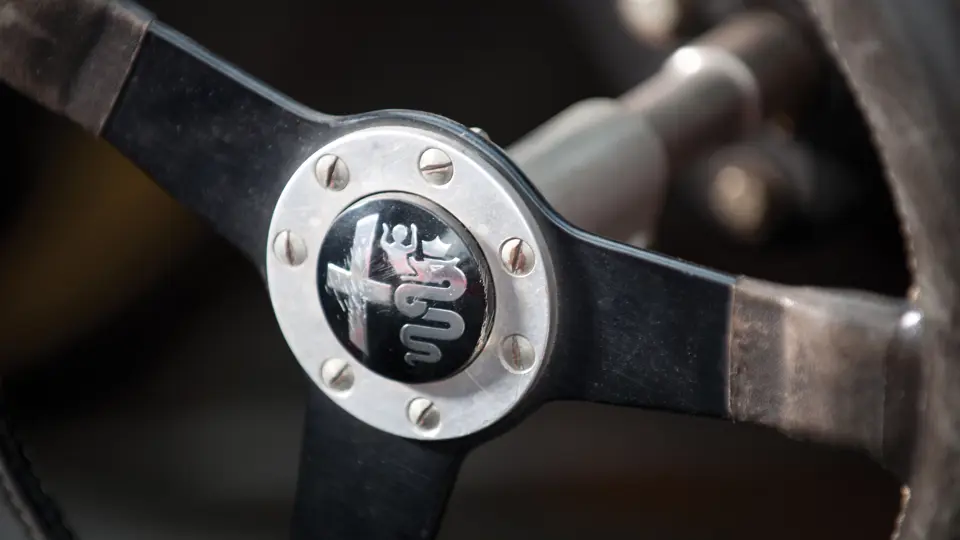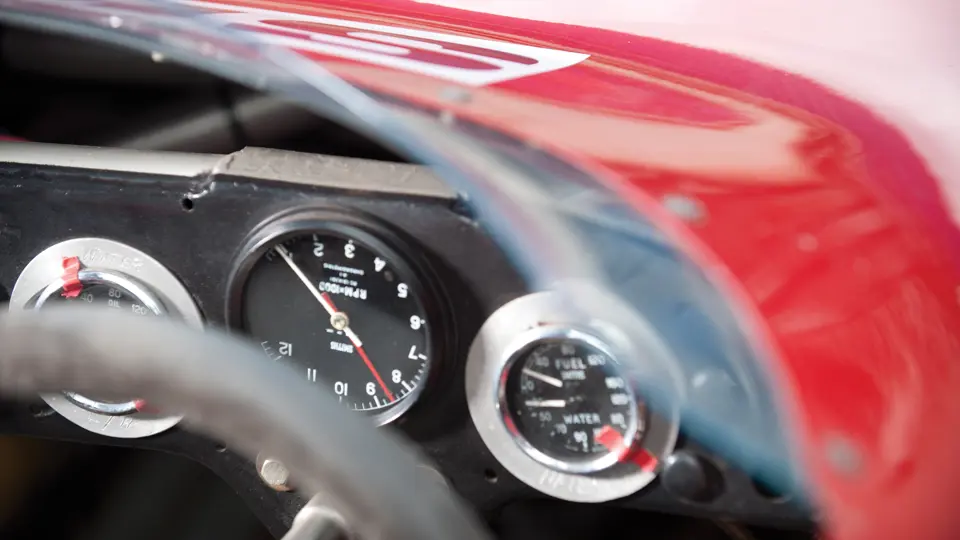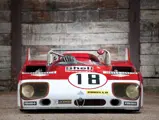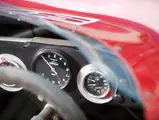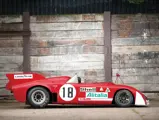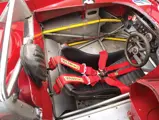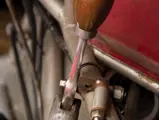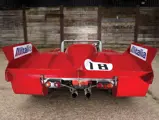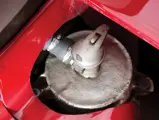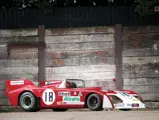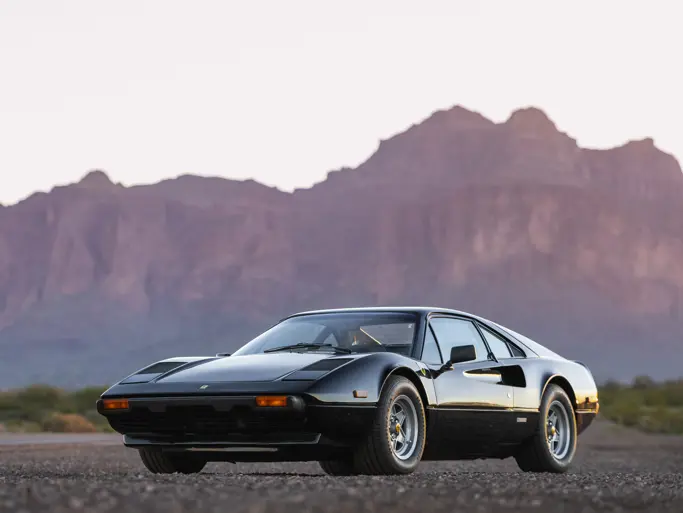440 hp, 2,998 cc DOHC V-8 four-valve engine, Lucas indirect fuel injection, five-speed manual transmission, independent front and rear suspension with double wishbones, coil springs and anti-roll bars, four-wheel hydraulic disc brakes. Wheelbase: 2,240 mm
• 4th overall at Le Mans with Nino Vaccarella and Andrea de Adamich
• Confirmed as 1972 Alfa Romeo Autodelta team car
• Driven by Andrea de Adamich in the 1972 season
• Beautiful patina with original paint and interior
Orazio Satta and Giuseppi Busso had joined Alfa Romeo as designers in 1938 and 1939 and worked together on everything from the 158/159 GP cars to the Tipo T33/3 tubular frame three-litre car of 1972. By 1959, Satta was head of design, while Busso was responsible for mechanical parts from 1948-77. The pair had considered building a 12-cylinder GP car, the 160, in the mid-’50s, and several prototypes were constructed, including a V-8-powered GT car, but it wasn’t until the early 1960s that the OSI Scarabeo coupé emerged.
The Scarabeo first appeared at the Paris Auto Show in September 1966 as a mid-engine coupé, with a transverse four-cylinder Giulia engine behind the driver. Three were constructed, but a spider prototype that was tested in Monza in January 1966 had a longitudinally mounted V-8 and would become the Tipo 33 in 1967.
Carlo Chiti had joined Alfa Romeo in 1952 to work with Giotto Bizzarini. Bizzarini left to join Ferrari in 1958, and Chiti went with him, taking designer Ludovico Chizzola. All three were students of John Cooper’s rear engine designs, and the result was the development of Ferrari’s 156 Shark Nose GP car, in which Phil Hill won the 1961 World F1 Championship. Such a successful year produced upheavals at Ferrari, and most of the competition department quit in November 1961. Chiti left to produce his own F1 car, the under-funded ATS, but it was not successful, and by 1963 he and Chizzola were calculating their next move.
AUTODELTA AND THE T33
Using the name Autodelta, the two made arrangements to become the competition arm of Alfa Romeo and set to work on what would become the successful TZ and TZ2 programs. By 1966 Satta and Busso were working on the prototype known as 105.33, and when a two-litre, four-cam, 90-degree V-8 was installed, the Tipo 33 program was on the road. The T33 “Periscopa” (for its overhead intake to the Lucas fuel-injection) weighed only 1,278 pounds, and its top speed approached 185 mph.
The T33’s first competition outing was at the Belgian hillclimb at Fleron in early 1967, the only event it could get to before Sebring, to which Chiti had committed a team. Fortunately, the lower-geared car won in the hands of Teodoro Zeccoli, and then Andrea de Adamich, who features significantly in this T33’s story, broke the GT lap record at Zolder. At Sebring, de Adamich and Zeccoli qualified, and de Adamich led the first two laps, but the Porsches and Ferrari Dinos got past and both Alfas retired.
Four cars were entered for the Targa Florio with de Adamich and Jean Rolland in one car. The rough roads broke the front suspension on all four cars, although de Adamich led the two-litre class for some time. A similar fate overtook the team at the Nürburgring on 1 June, though de Adamich and Nino Galli finished 5th, after taking over the Bissinello/Zeccoli car when the front suspension broke on their own car.
The team won several hillclimbs but withdrew from Le Mans in June and the BOAC 500 at Brands Hatch in July. Then French rally driver Jean Rolland crashed at Montlhéry and was killed. Success came at Vellelunga in October, however, when de Adamich and Ignazio Giunti went 1-2.
INTRODUCTION OF THE T33/2
As pretty as the T33 was, it just didn’t hold up, and the stakes were getting higher. The 1968 Daytona 24 hours was a qualified success with three T33/2s finishing 5th, 6th and 7th, though the Porsche 907s went 1-2-3. Three cars were entered for the BOAC 500 at Brands Hatch but performed poorly on a weekend mostly remembered for Jim Clark’s death at Hockenheim.
Autodelta entered four T33/2s for the ’68 Targa Florio, and while Vic Elford won in his Porsche 907, Galli/Giunti were 2nd and won the two-litre class, while the other T33s finished 3rd, 5th and 6th, a much better showing. The Nürburgring 1,000 kilometres saw a 2.5-litre T33 entered, along with four two-litre cars. Nino Vaccarella and Herbert Schultze finished 5th and won the two-litre class, while other T33s were 7th, 10th, 13th and 29th. This time, problems were electrical. Finally the team won at Mugello, with Galli/Varella/Bianchi 1st and Jo Siffert 2nd. The T33s now seemed to be showing real promise and finally managed a 1-2-3 at Imola, with Giunti/Galli taking the win. The pair would be 4th at Le Mans, with other T33s 5th and 6th.
You might think 1969 would build on this improvement, but it was not to be. Daytona and Sebring were marked by breakdowns and crashes, and then Lucien Bianchi was killed at Le Mans testing. Scooter Patrick was winning races in the U.S., and hillclimb results were good, but Alberti/Pinto only scored a 5th in the Targa Florio, though the race did mark the return of Andrea de Adamich, who DNF’d. Still, Carlos Pace won the Rio 3 Hours in Brazil, while Nino Vaccarella managed a 2nd in Sicily in the T33 coupé, Giunti a 2nd at Imola in heavy rain and Weber a 1st at Hockenheim in dense fog.
By 1970 it was clear just how challenging this series would be, but the schedule was expanded to cover any races of merit. The new cars were also given star names, as one of Chiti’s fancies, but the DNFs continued. Still, Piers Courage and de Adamich won the Buenos Aires 200 in Argentina and then were 8th at Sebring, behind Gregory/Hezemans, who were 3rd. Galli/Rolf Stommelen were 7th at Monza, with Courage and de Adamich 13th.
T33/3 & 33/TT/3
Finally in 1971, the T33/3 appeared with the 440-hp, three-litre engine, and things began to change. Rolf Stommelen/Nino Galli were 3rd in the Argentine 1000 km in Buenos Aires, ahead of Pescaraolo/de Adamich in 4th, and the teams repeated the position at Sebring. Bob Wollek won at Albi, and then de Adamich/Pescarolo won the Brands Hatch 1000 km.
At Imola, de Adamich/Pescarolo were 3rd, ahead of Stommelen/Galli in 4th and Hezemans and Vaccarella in 5th. De Adamich/Pescarolo were 3rd at Spa and then 2nd in the Targa Florio, behind Vacarella/Hezemans. The Nürburgring 1000 km saw de Adamich/Pescarolo 4th and Vaccarella/Hezemans 5th, while the latter team was 2nd in Austria, with Stommelen/Galli 3rd. De Adamich/Ronnie Peterson won the Watkins Glen 6 Hours, and de Adamich managed 7th in the Can Am race by himself the next day, after his mechanics were too tired to install the new four-litre motor.
In came the new 33/TT/3, which was essentially an evolution of the previous year’s T33/3 chassis. The main difference was in the wheelbase, which was extended by some 20 cms, and the steel space-frame had been reduced down to the bare minimum weight limit within the year’s regulations. Other changes included a new safety fuel cell. The changes were certainly quite effective, with Nanni Galli reporting that the 33/TT/3 was a very reactive, sensitive car. In fact, Vic Elford and Jo Siffert played key roles in developing this new chassis, particularly in the braking and handling departments. Although the cars suffered from teething problems in the first race of the 1972 season at Buenos Aires, the threat of the new car to the works Ferrari 312 PB was quite apparent.
CHASSIS NO. AR 11572/010
It is well known and confirmed by the authors of the definitive Alfa Romeo Tipo 33 book, Peter Collins and Ed McDonough, that Alfa Romeo chassis records are notoriously difficult to track. Many records were kept only in Carlo Chiti’s head, and he died in 1994. However, Collins and McDonough were able to confirm that this car was the car driven to 4th OA at Le Mans in 1972, details of which we will go into later.
Furthermore, this 33/TT/3 chassis is confirmed by Stefano d’Amico, President of the Alfa Romeo Registro Storico, to be the car assigned to Andrea de Adamich for the 1972 season. That year the Ferrari 312 PB seemed like the one to beat, but Lola had the new T280, and the Mirage-Cosworth was on the horizon. Alfa Romeo’s new drivers were Helmut Maro and Vic Elford, both whom were expert analysts and helped sort out the T33’s handling. The season progressed as follows.
Elford/Marko opened the new year with a 4th at the Argentina 1000 km behind local privateers Faceti/Alberti who were 3rd. In February Elford/Marko were 3rd at Daytona with de Adamich/Galli 5th. At Sebring, in March, Vacarella/Hezemans were 3rd but Revson/Stommelen and de Adamich.
At the Brands Hatch 1000 km in the UK in April, Stommelen/Revson took 3rd, with de Adamich/Elford 4th, while Galli/Marko were 2nd in May’s Targa Florio in Sicily, followed closely by de Adamich/Hezemans. De Adamich was paired with Helmut Marko for the Nürburgring 1000 km in May and finished 3rd.
In June 1972, as confirmed by Peter Collins and Ed McDonough, chassis 010 was entered into the 24 Hours of Le Mans on number 18 and Nino Vaccarella and Andrea de Adamich behind the wheel. After the gruelling 24-hour race, the car had covered 307 laps and close to 4,200 kms of hard racing. Vaccarella and de Adamich brought the car in over the finishing line in 4th position overall, behind the Matra-Simcas and the Porsche 908 Coupé, a fantastic achievement for the works Alfa Romeo Team, Autodelta.
The season was not over yet. In October, de Adamich was 1st at Monza in the Groupe 5 race, then 3rd at Imola and 6th at Hockenheim. De Adamich would continue to drive for Alfa Romeo into 1974 and the debut of the T33/TT/12, but never again did he have the same success.
This car, chassis AR 11572/010, was used by Autodelta until mid-1973 and then sold to noted collector Richard Pilkington in the UK. He kept it for two years before selling it to Martin Morris in 1976, who owned it for a year. Morris passed it on to Steven O’Rourke, manager of Pink Floyd and colleague of Nick Mason, Pink Floyd’s drummer and well-known vintage racer.
O’Rourke kept 010 until 1986 when he sold it to a Mr. Hayashi in Japan. It remained in Japanese ownership and was subsequently rebuilt by a former Autodelta chief mechanic in Los Angeles. Between March and April of 2006, the engine and suspension were rebuilt and the brakes revised, but the body and interior were left original, giving the car a fantastic look.
AR 11572/010 represents an intensely competitive period in sports-racing. In common with many benchmark designs, the T33 was constantly being developed and was the vehicle for a number of heroic drives against the Ferrari 312 PBs.
This car simply yearns to be driven again in the world of vintage racing, and we are sure it would prove very competitive once again against the Ferrari 312 PBs as well as the Lola T280s and Mirage-Cosworths. As an ex-Autodelta works car steeped in history, it will be invited to events worldwide, not to mention, of course, the Le Mans Classic in 2012 where it will have a guaranteed entry.


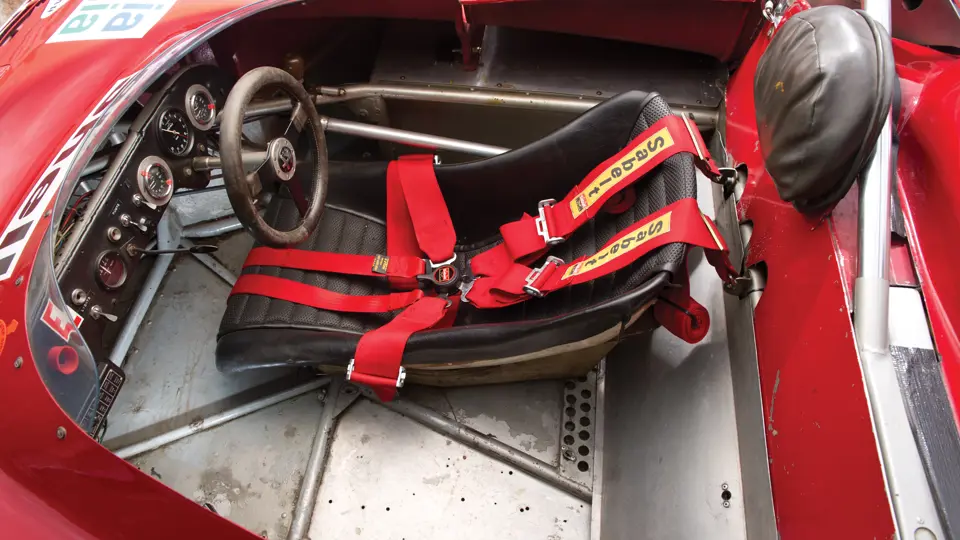


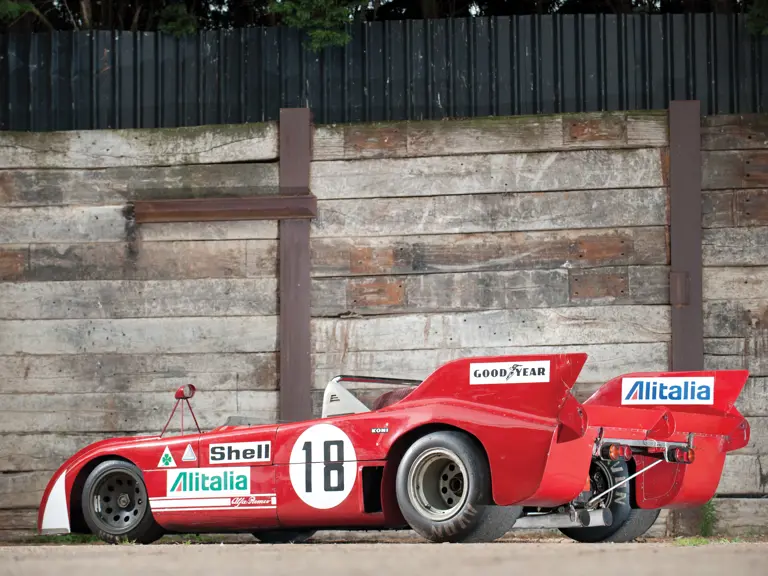
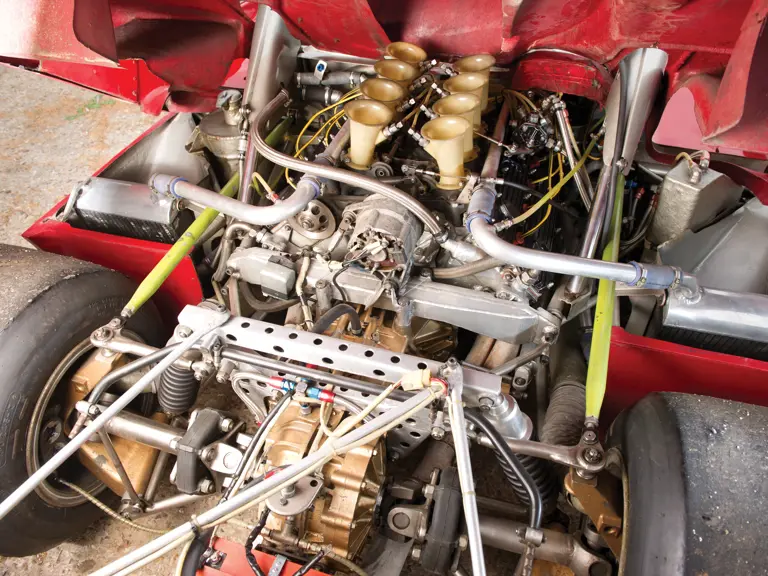
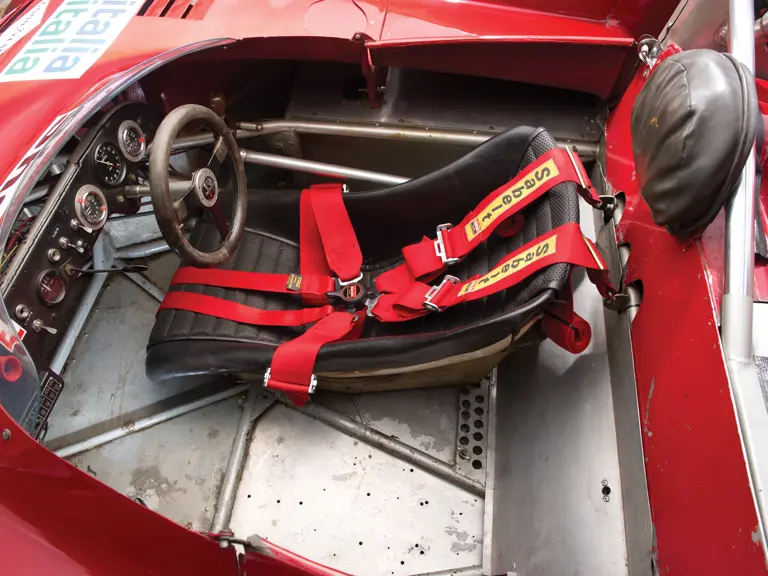

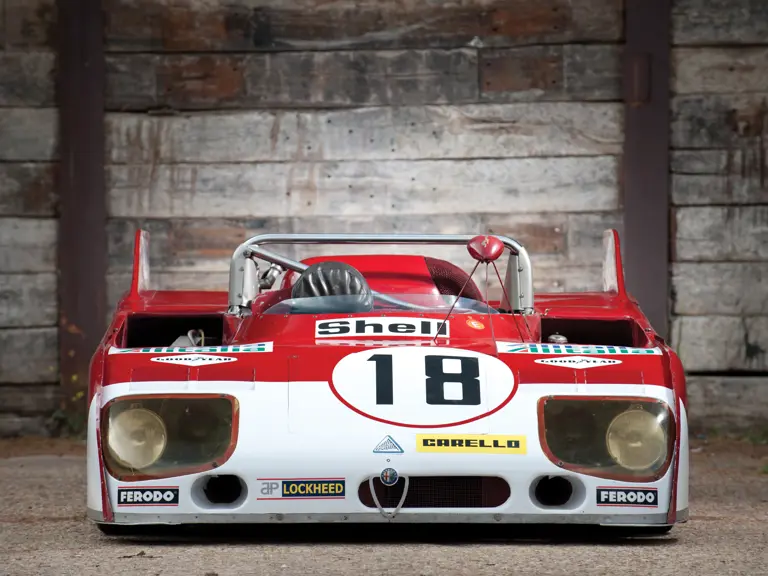
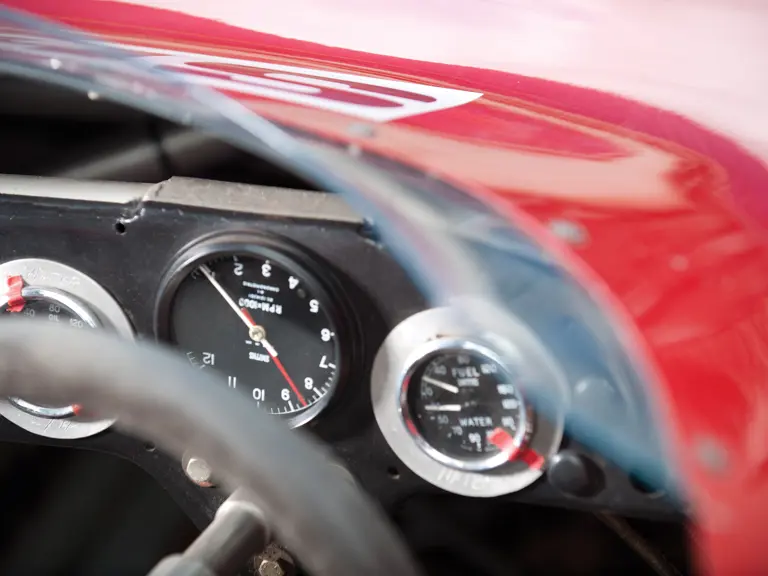
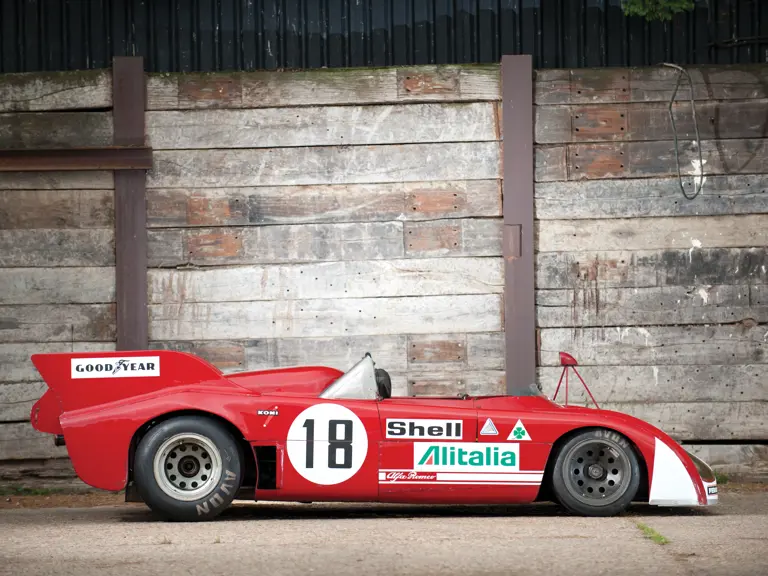

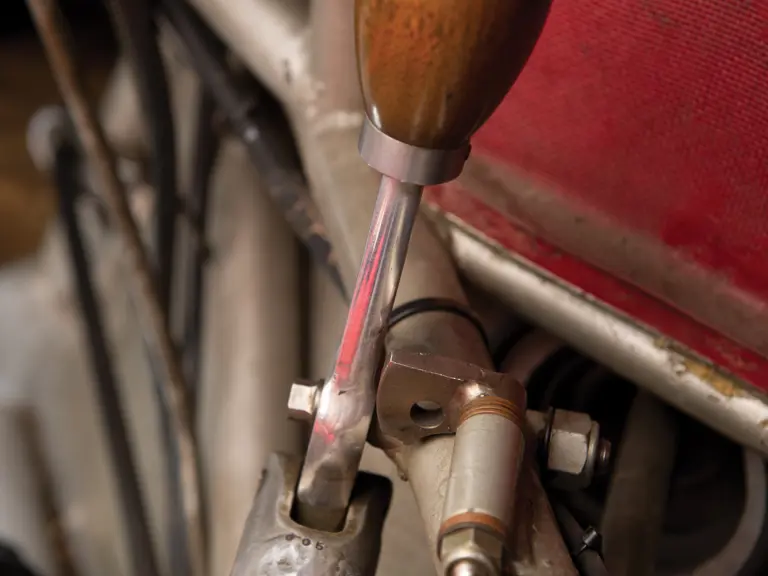


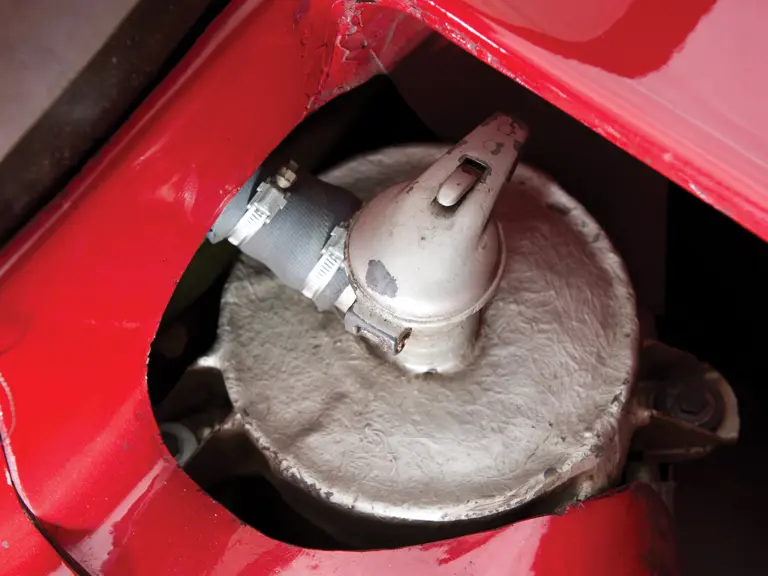
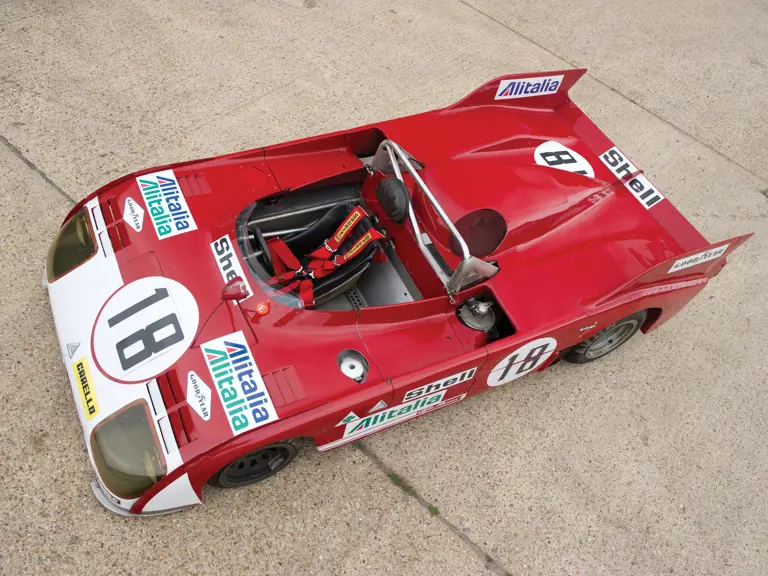

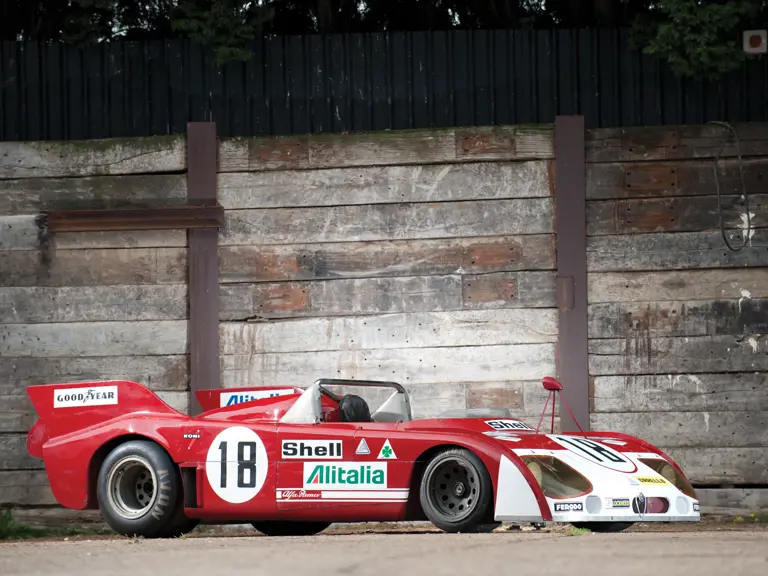
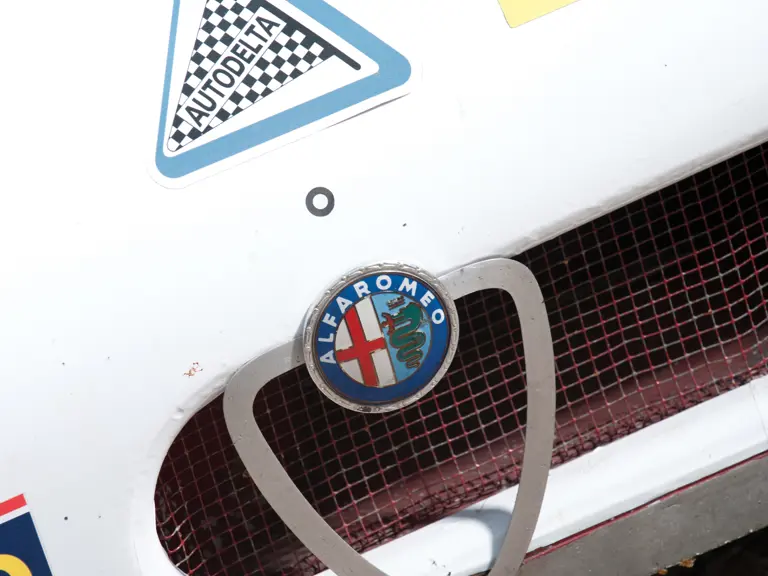
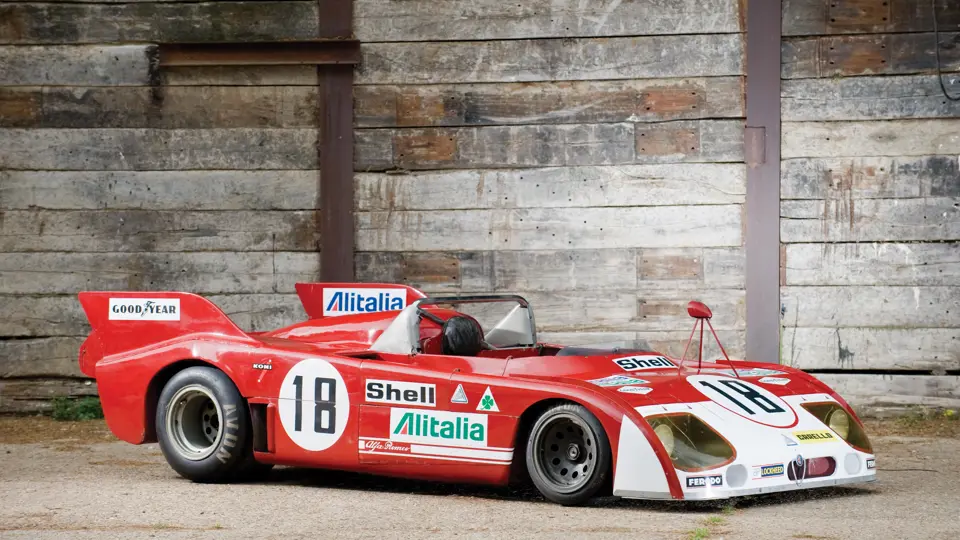
 | London, United Kingdom
| London, United Kingdom
